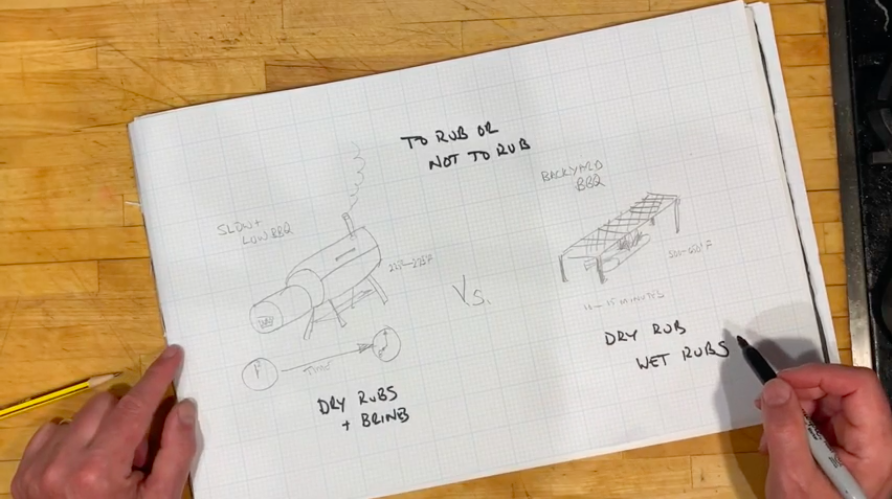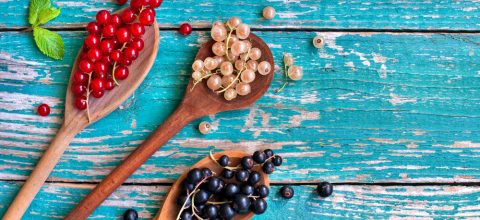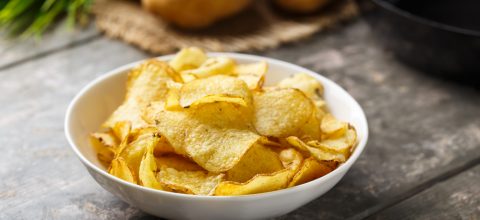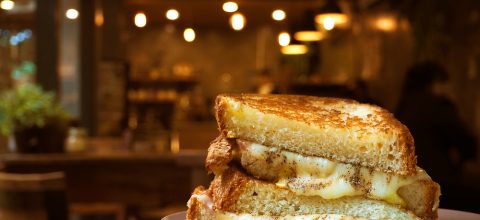August 2020 · Chef John Reed, CEC, CCA
It’s summer, and I am burning through charcoal and wood like nobody’s business. I am lighting the fire and cooking over live fuel as much as I can. I have been debating on buying a fancy propane grill with big knobs, burner plates, resting racks and all the bells and whistles, but I can’t do it. There is nothing better than the taste of cooking over live fuel and the concentration and timing to do it right.
One skill set that a good grill person needs to have is the understanding of when and how to season items that are going to hang out “low and slow” or get thrown to the flames.
The art of creating flavor when grilling or slow smoking varies based on the style of cooking and the proteins or products being cooked. I want to go over the basics of creating layers or depth of flavor. Layered flavors are topical or surface flavors such as quick wet marinades and rubs that compliment or enhance.
Depth of flavor refers to adding flavor or to manipulate the texture of the actual ingredients through time and various chemical cooking processes. These techniques have been learned over thousands of years of cooking and have been ingrained into our psyche, especially around the grill. If you want to see it in action, rummage around the back of your spice cabinet; I bet there’s a grill rub, seasoning blend or even a seasoned salt back there somewhere.
In order to understand the techniques, we need to take a walk back in time. When the quality of ingredients was marginal at best, cooks salted and brined items to increase the shelf life or break down the structure of older or wild proteins. Those flavors have evolved with time, and our understanding of the process has too.
Examples of these two processes are seen around the country, one being the use of dry rubs for traditional BBQ in Carolina or Texas. The other is fried chicken brined or even soaked in buttermilk.
What’s the science? In BBQ, the combination of salt and sugar adhere and help draw out moisture onto the surface of the meat, and where it reacts with the smoke, heat and other spices to create that great crust or bark that we use to define great BBQ. In brining, the combination of salt and alkaline from lactic acid or acetic acids are added to encourage those compounds to penetrate the structure of the item and slowly break down the connective structures and tenderize. This was traditionally used for game meats and old animals that may be tougher. It is not just limited our nation; cuisines from India, the Caribbean and Africa have all developed these processes to add great flavor and tenderize. Think tandoori, jerk chicken, Korean BBQ and more. This was also used as a sterilization technique. You still see it in many cuisines where fish and other proteins are washed with lemon juice or vinegar.
So, when do you rub and when do you brine? It really comes down to the following thoughts:
- Thin and lean – Light and short
- Dark and thick – Wet and long
- Cut on the bone and cheap – Dry and slow
- Whole and lean – Wet and aggressive flavors
- Expensive – Simple and in moderation
There are many flavors and choices, but there are three types of recipe styles you need to know to make all these things happen. They are:
- Dry rubs
- Wet rubs or marinades
- Brines
In the latest episode if the digital RBDK, I will walk you through how to make a base recipe for all of these and how to use them. So, before you light that fire, look at what you have and make the decision-do I need to think ahead, as this meal needs to take a bath for a while? Or do I rub it down and let it hang out for a while so it gives me time to grab a beverage, watch the flames dance and get ready to make the magic happen?











